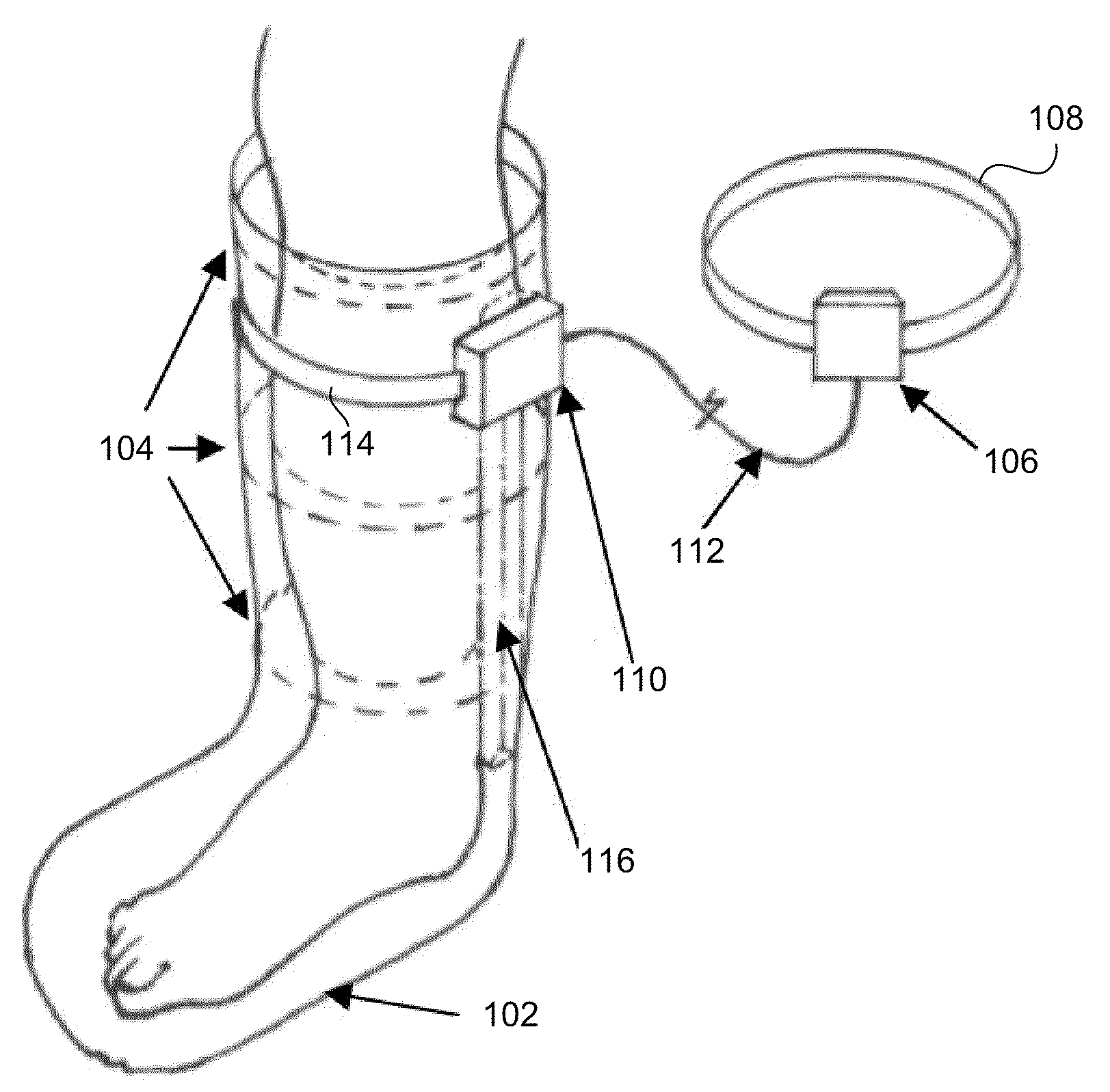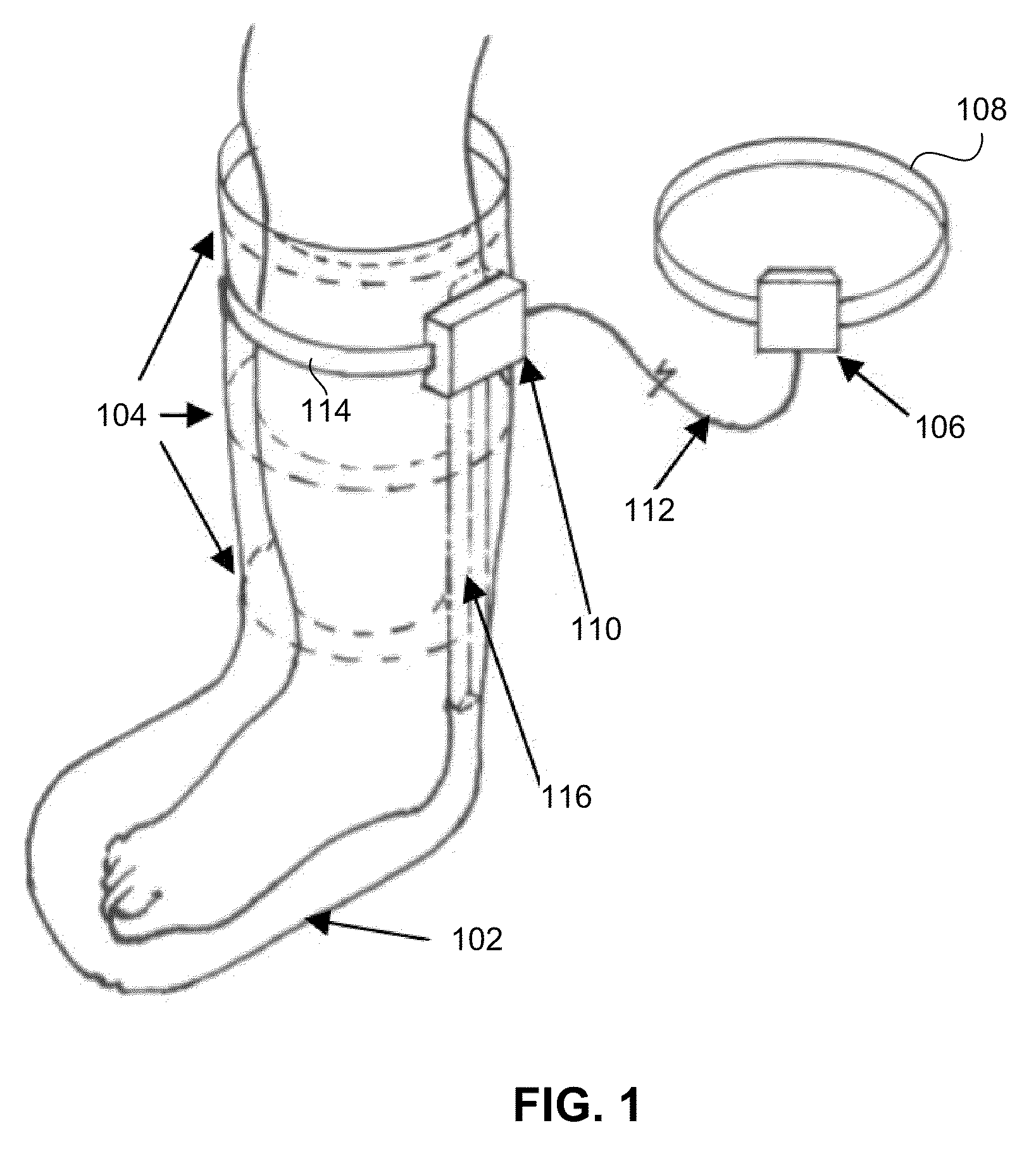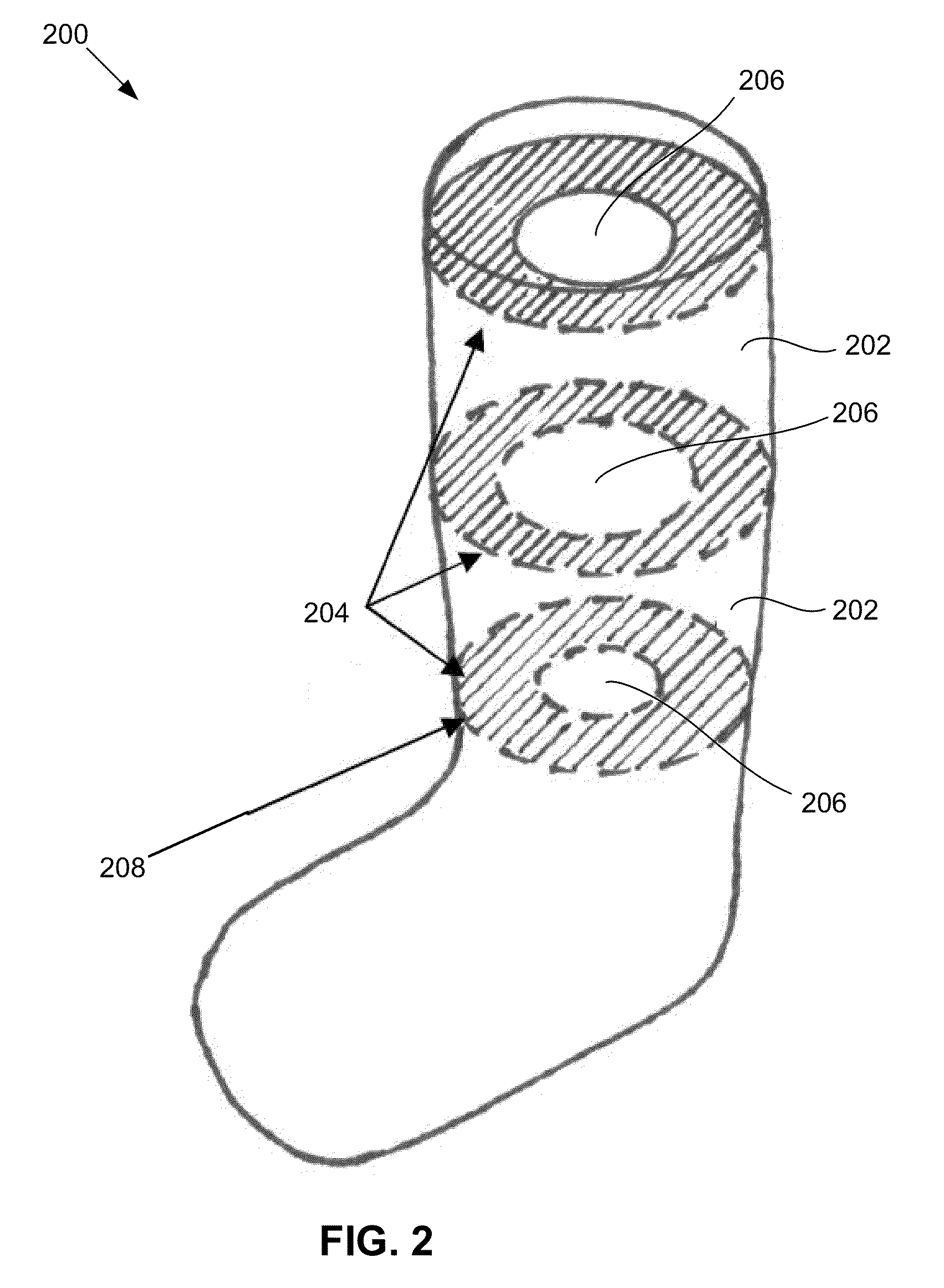Ambulatory negative pressure therapeutical compression device
a therapeutic device and negative pressure technology, applied in the field of venous hypertension medical devices and treatments, can solve the problems of increasing venous hypertension, increasing venous hypertension, and reducing the efficiency of calf-muscle pumping, so as to add nutrients and oxygen to the blood
- Summary
- Abstract
- Description
- Claims
- Application Information
AI Technical Summary
Benefits of technology
Problems solved by technology
Method used
Image
Examples
Embodiment Construction
While the etiology and pathophysicology of CVI and resulting venous ulcers are well established, there has not been satisfactory progress in the treatment of this problem. Compression of the foot and lower leg may be beneficial in the treatment of CVI. It is believed that the application of external pressure to the calf muscles raises the interstitial pressure, forcing blood into the deep venous system, decreasing the superficial venous pressure and improving venous return, leading to a reduction in superficial hypertension. This allows ulcers to heal. Gradient pressure may be achieved using a “Jobst® stocking”, for example, a compressive sock (related to compression bandages and hosiery) that is worn around the foot and lower leg. Compression techniques have been used in a number of different treatment regimes, achieving a reasonable degree of success when combined with good patient compliance. Unfortunately, compression has not proven efficacious in poorly compliant patients, who ...
PUM
 Login to View More
Login to View More Abstract
Description
Claims
Application Information
 Login to View More
Login to View More - R&D
- Intellectual Property
- Life Sciences
- Materials
- Tech Scout
- Unparalleled Data Quality
- Higher Quality Content
- 60% Fewer Hallucinations
Browse by: Latest US Patents, China's latest patents, Technical Efficacy Thesaurus, Application Domain, Technology Topic, Popular Technical Reports.
© 2025 PatSnap. All rights reserved.Legal|Privacy policy|Modern Slavery Act Transparency Statement|Sitemap|About US| Contact US: help@patsnap.com



